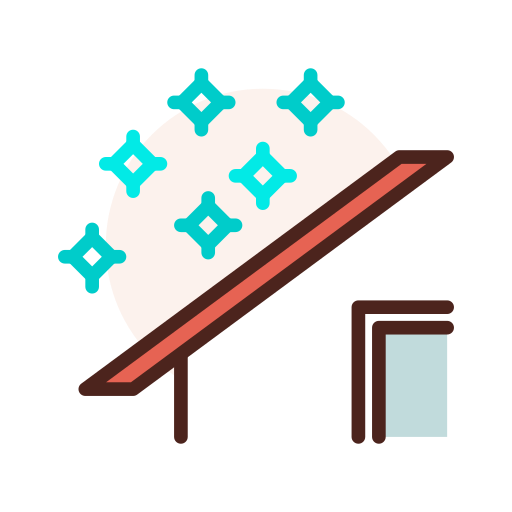A new homeowner checklist is a golden tool. It acts like a roadmap, guiding you through the whirlwind of tasks and ensuring you don’t miss any crucial details that can make your new house a comfortable and happy home.
Even the most important things can slip your mind in the throes of unpacking boxes and celebratory dinners. Take plumbing, for example. Without a checklist reminding you to check for leaks or schedule a maintenance check, you might miss a minor issue that could lead to a major headache (and expense).
So, before the excitement of new homeownership fades, grab a pen and prepare to create your personalized checklist. It’ll be your weapon for a smooth transition and a foundation for making happy memories in your new home.

Creating a Helpful New Homeowner Checklist
This is an exciting time filled with possibilities for creating your dream space. Consider making a personalized checklist to ensure a smooth transition.
This checklist shouldn’t be a rigid to-do list but a flexible guide tailored to your needs. Consider the age and condition of your home. A brand-new house might need less immediate maintenance than a fixer-upper.
Essential Tasks in a New Homeowner Checklist
As a homeowner, you want comfort, security, and appreciation for your investment. Our new homeowner checklist will assist you in achieving these objectives. Let’s delve into some essential tasks to include in each stage.
Stage 1: Initial Move-In (Before or Shortly After Moving In)
This first stage is all about getting settled in. Here’s what to focus on:
Security and Safety
When you move into a new home, it’s essential to feel secure and in control. One way to achieve this is by ensuring you’re the only one with access to all keys and duplicates.
Replacing the locks, especially on exterior doors, is a crucial step in this process. Knowing that you’re the sole owner of the keys gives you peace of mind. It removes uncertainty about who else might have copies of the previous keys.
Besides replacing the locks, another critical security measure is safeguarding against fire incidents. Approximately 358,500 home fires happen annually in the U.S. Check your smoke and carbon monoxide detectors and replace any batteries if necessary.
For an extra layer of security, explore smart home security systems. The previous homeowner may have overlooked this area. Consider adding strategically placed security cameras and motion-sensor lights around your property.
Utilities, Bills, and Address Change
This might be the most important item in a new homeowner checklist. Have you ever tried a hot shower and found no hot water after a long day? Utilities are the backbone of living.
Contact your preferred service providers to schedule the transfer of essential utilities like electricity, gas, water, and trash collection. Consider inquiring about any introductory offers they have.
Update your address with the post office, Department of Motor Vehicles (DMV), and other relevant organizations to ensure you don’t miss important mail. An address change will also ensure you receive bills or account information from your new utility providers.
Set up internet and cable service to stay connected with loved ones, keep up with entertainment, and access essential online services. Explore different packages and providers to find the best fit for your needs and budget.
Initial Home Repairs and Maintenance
While your new home seems functional initially, there could be underlying issues. Some areas need a little TLC (tender loving care) to ensure smooth operation and prevent future problems.
Identify any immediate home repairs or maintenance tasks, such as leaky faucets or damaged fixtures. Address them promptly to maintain the condition of your new home.
Audit Plumbing
Conduct a plumbing audit to identify plumbing issues. Give your plumbing system a once-over by inspecting for leaks under sinks, around toilets, and behind appliances.
Even a tiny leak can lead to water damage, so addressing any issues promptly is crucial. If you discover any leaks, consider finding a licensed plumber for repairs to avoid future problems.
Conduct an HVAC Health Check
After dealing with plumbing, schedule a professional inspection of your heating, ventilation, and air conditioning (HVAC) system. This is especially important before extreme weather hits.
Test Electrical Components
Test all electrical outlets and switches throughout your home to ensure they function correctly. Look for any visible damage to cords or plugs, and address any concerns to prevent electrical hazards.
Locate All the Shut-off Valves
Knowing where the shut-off valves for water and gas are located is crucial in emergencies like a pipe or a gas leak. Familiarize yourself with these locations and how to operate the valves.
Schedule Deep Cleaning
Consider scheduling an initial cleaning service to give your new home a deep clean and fresh start. This can be especially helpful if the previous occupants haven’t left the place spotless.
Consider Home Warranty Coverage
As you explore your new home, consider the benefits of a home warranty. This service can repair or replace major appliances and home systems in case of unexpected breakdowns.
Stage 2: Settling In
Now it’s time to truly settle in and transform your new house into a comfortable and personalized haven. Here are some key tasks to include in your checklist:
Personalizing Your Space
Now’s the time to unleash your creativity and make your new place reflect your unique style. Consider painting, adding new artwork, and sanding and finishing old floors.
A fresh coat of paint can dramatically transform a room. Whether you choose a bold accent wall or a calming neutral color scheme, painting allows you to personalize your space.
Display your favorite artwork, photos, or decorative items to add personality and warmth to your new home. Curtains, throw pillows, area rugs, and other decorative elements can tie your space together and reflect your style.
Unpacking and Organize Belongings
This might seem obvious, but unpacking efficiently can save you time and frustration in the long run. Take it one room at a time. Consider using clear storage containers to keep your belongings organized and easily accessible.
Knowing Your Community
It’s also important to extend your sense of home beyond your walls and connect with the surrounding community. This will make your new neighborhood feel more welcoming and secure.
Explore the area and discover the local offerings. Take a walk or bike around your neighborhood to familiarize yourself with the streets and parks. Explore local shops, restaurants, cafes, and libraries.
Remember to research and explore the broader community services available in your new neighborhood. These could include grocery stores, hardware stores, dry cleaners, and places of worship.
Long-Term Items in a New Homeowner Checklist
It’s time to shift your focus toward ensuring its long-term health and functionality. This part of your checklist will guide you through essential seasonal maintenance tasks, preventative measures, and considerations for future improvements.
Keeping Up With the Seasons
As the seasons change, so do your home’s maintenance needs. In spring and fall, cleaning your gutters twice a year is crucial to prevent rainwater overflow and potential damage to your roof and foundation.
Schedule regular HVAC maintenance during these seasons to ensure your heating and cooling systems operate efficiently throughout the year. Don’t forget to check your smoke and carbon monoxide detectors every six months.
Finally, consider changing your air filters every 1-3 months, depending on your usage and air quality, to maintain optimal airflow and indoor air quality.
Preventive Home Repairs and Maintenance
Developing a habit of preventative maintenance can go a long way for new homeowners. It can save you time, money, and stress in the long run.
Regularly check the plumbing for signs of water damage and leaks. Focus more on the areas around sinks, toilets, and under appliances.
Inspect your roof for repairs. This identifies and addresses potential damage before it leads to more extensive repairs.
You should also schedule inspections and pumping every 2-3 years to ensure proper functioning. This is especially crucial for homes with septic systems.
Planning for the Future
While you might be basking in the joy of your new home, it’s wise to start thinking about the future. Consider creating a budget and a loose plan for home renovations or improvements.
This is where you plan home repairs for features you want to add or update in the coming years. Researching qualified contractors and architects in advance can save you time. When the time comes, you can be sure of finding the right professionals for the job.
Ensuring Financial Responsibility
Owning a home comes with specific financial considerations. Schedule your property tax payments to avoid any penalties or late fees. Review your homeowner’s insurance policy to ensure it provides adequate coverage for your property.

Create a Home You’ll Cherish

Compare Quotes from Top-rated Remodeling Contractors in your area.
Homeownership is an ongoing journey, not a final destination. Your new homeowner checklist should evolve alongside your experiences, reflecting completed tasks and new maintenance insights.
Connect with reliable local home improvement services to start your journey with confidence. Enter your zip code here to discover nearby options. Make it easier to handle essential chores and dream projects to create a house you’ll cherish.





Facebook
Comments